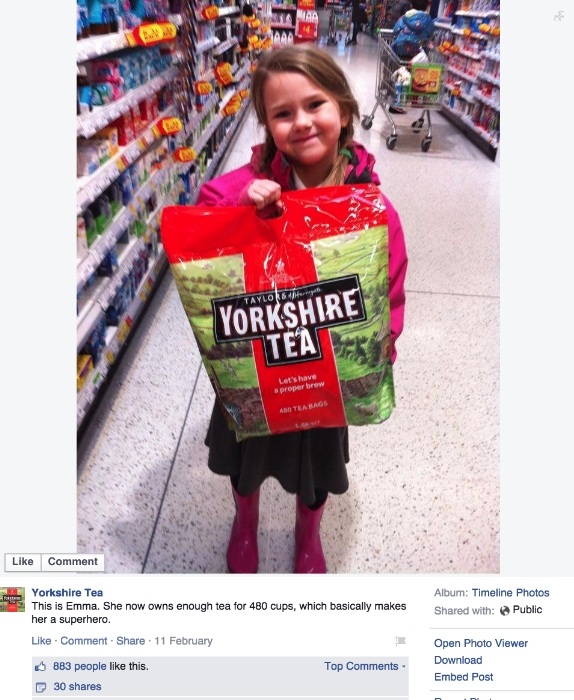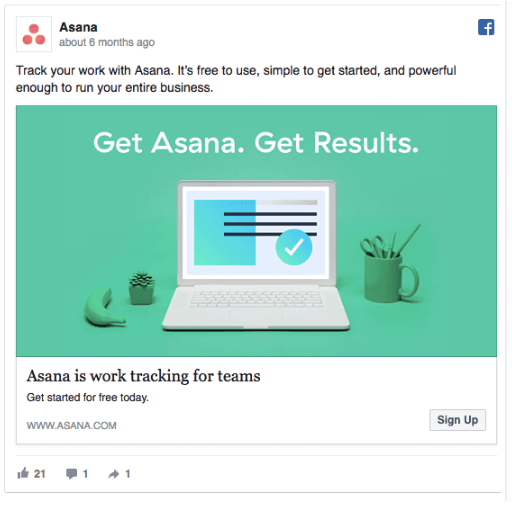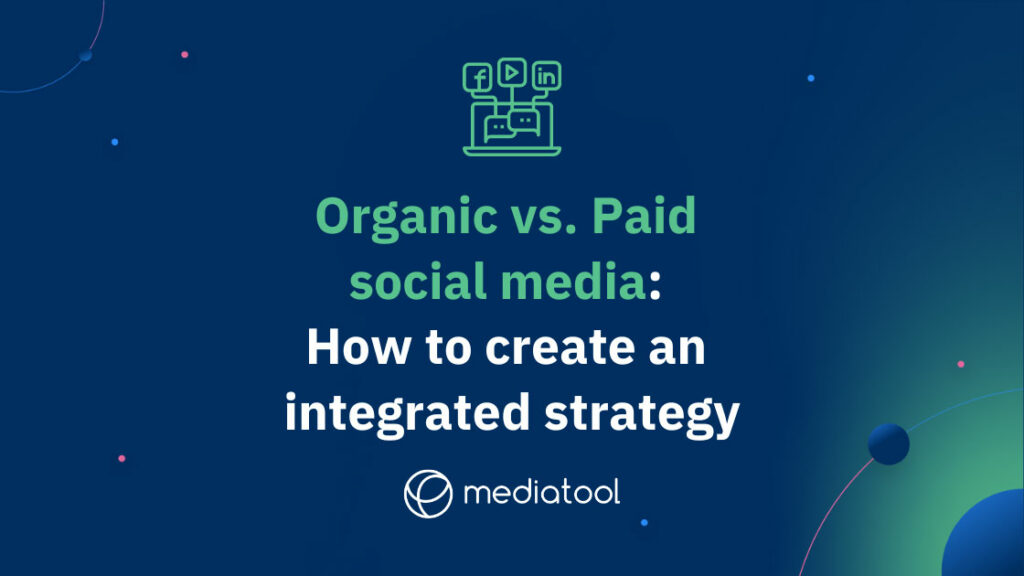When it comes to social media, the question isn’t whether you should focus on organic OR paid social, you need both. Instead, the question should be how to create a strategy where they work in tandem to deliver the best results.
There’s many factors that come into play and that’s why you need a solid social media strategy before you get started. We’ll let you into a little secret – it doesn’t mean posting organic content and putting some pennies behind it. If used correctly, paid social can help your content reach the masses in a way that organic rarely can these days.
So, where to begin? Keep reading to find out.
Defining Organic vs Paid social media
Organic Social Media Marketing
Organic social media refers to the free content posted on social media platforms. This includes posts shared by all users, including business pages.
For businesses, organic content primarily reaches existing followers or those who have liked the page. The reach of organic posts can expand if users engage with them, potentially appearing in the feeds of their friends or followers.
Utilizing organic social media strategies involves creating content without direct cost, leveraging organic growth to build long-term relationships with genuinely interested users.
While there are many scheduling tools available, starting with the platform’s free tools is a straightforward way to manage organic efforts.
Paid Social Media Marketing
Paid social media, on the other hand, involves social media advertising where businesses invest advertising dollars to reach a broader audience.
This paid content is designed to target specific audiences, aligning with business goals like lead generation or customer acquisition. Paid social media campaigns can be highly targeted, aiming to reach a targeted audience beyond existing customers.
For example, a sponsored Facebook post will have a ‘Promoted’ tag, signaling its nature as paid content. Paid social media strategies often involve creating highly targeted ads, including video ads, to meet specific marketing objectives.
Crossover and Strategic Integration
There’s often a crossover between organic and paid social media. For instance, ‘boosting’ organic posts is a common tactic in paid social media efforts, helping to increase visibility and drive engagement, especially for evergreen content.
Both organic and paid social media are integral parts of an overall social media strategy, contributing to a comprehensive social media marketing plan.
By understanding and leveraging the key differences between organic reach and paid promotion, businesses can effectively use social platforms like Facebook to enhance audience engagement, build brand awareness, and achieve specific marketing strategies.
How to use Organic social media
Having an organic social media presence is the foundation to your overall social media strategy. The aim of organic content is to build a brand presence and nurture your audience to develop a relationship with current and potential customers.
Think of your social media pages as an extension of your website but with more personality. Great content may be the deciding factor between a customer buying from you or your competitor.
How to use organic social media in your marketing strategy:
1. Show your brand’s personality
In the realm of organic social media marketing, the approach isn’t just about aggressive selling; it’s more about social engagement.
Remember, the essence of social media is to foster connections – and this includes connections between businesses and their audience.
Organic social media marketing strategies should focus on showcasing your brand’s unique personality. This involves carefully crafting your tone of voice to communicate effectively with your target audience and choosing the right mix of content mediums and post types that resonate with them.
A prime example of a company that successfully showcases its personality on social media is Burger King.
Their approach, often cheeky and direct, aligns well with their customer base, and this is evident in their organic posts across various social platforms. Their organic content not only attracts their existing followers but also captures the attention of a wider audience, including potential customers from competitors.
Incorporating these elements into your organic social media strategy is crucial. It’s about understanding the key differences between organic vs. paid social media, and using organic efforts to authentically engage your audience, build long-term relationships, and foster community engagement.
While paid social media campaigns focus on targeting specific demographics through paid ads and sponsored posts, organic social media revolves around creating genuine content that sparks interest and encourages user-generated content, thereby enhancing audience engagement without the direct cost of advertising dollars.
This approach helps in building brand awareness, driving website traffic, and ultimately contributing to your broader marketing efforts.
2. Open a dialogue with your target audience
Use organic social to actually talk to your customers. Want feedback on your service? Ask your followers.
Announcing a new product?
Tell your followers to get them involved in the excitement.
Involving followers in your content will not only help with your engagement but in turn they will move from ‘followers’ to ‘fans’, building the foundation for a long-term relationship.
A great example from Yorkshire Tea, they include their followers in their organic content and their followers lap it up!

This is a two way street, use social media to address and answer customer service queries, diffuse problems that might have escalated and retain customers who might have otherwise churned.
Organic social is also important for validating the legitimacy of your company, if you have a reliable looking social media page with positive reviews, customers might be more likely to buy from you.
3. Provide valuable content
In organic social media, the focus is not on direct product promotion, but rather on providing value at the awareness stage of the marketing funnel.
Aim to share content that educates, inspires, or addresses the pain points of your target audience.
Recognize that users engage with different social media platforms for various reasons and tailor your content accordingly. For example, Instagram is ideal for visual content like images and video, while Twitter excels in showcasing thought leadership and trending topics.
By consistently posting valuable content suited to the preferences of your target audience on their chosen social platforms, you’ll cultivate organic reach and engagement.
While conversions might take longer compared to paid social media campaigns, this approach of using organic posts to address specific audiences, build community engagement, and foster long-term relationships is a crucial aspect of an effective social media strategy.
It leverages the strengths of various social media platforms, contributing to broader social media marketing efforts without the direct cost associated with paid advertising.
How to use Paid social media marketing
Where organic posts sit and wait to gain traction, paid posts are guaranteed to be seen depending on how much money you put behind them and how you set it up. By placing ads where your customers spend their time online, you advertise to them directly.
The first rule of paid social is not to feel intimidated by paid social. One in four online purchases are now made as a result of a social media interaction. It’s a tried and tested way of generating results and guess what, you don’t need to spend the big bucks for it to work!
To get started with paid ads, you need to be clear on how you want to use them. We’d recommend considering a few things first to figure out how it can complement your marketing strategy:
Review your organic results to find what type of content resonates with your audience and performs the best in line with your marketing objectives.
Look at how your competitors are using it. This could mean saving ads you receive from a competitor, or looking at the ads they’re running on Facebook using Facebook Ad Library. Simply search for a competitor or relevant Facebook page and you will find out if they’re currently running ads and if they are, what content they’re using.
Decide what stage of the funnel you want ads to help with and therefore what platforms to use.
Each platform has its own paid ad offering but ultimately the best practices remain the same.
How to use a paid social media strategy:
1. Boost top performing organic content
After you’ve reviewed your top performing organic content, aim to recreate what worked well in your new posts. Then show it to new eyes by boosting it.
Boosting posts is easier than setting up ad campaigns and low risk. If you want to test the waters of paid social, start here.
We’d recommend boosting inside the Advertising or Campaign Manager dashboard to set it up with structure, rather than boosting directly from the post. In the advertising platforms for each social media network there are better targeting and measuring options available.
2. Optimise ads for each platform
Like with organic social, different types of ads work on different platforms. Make sure your ads are in the right format and size for the network.
As a basis, ensure your ad includes:
- Call to action (CTA)
- Short, snappy copy that intrigues
- Eye-catching visuals
- Make sure the link works and isn’t broken or directing traffic to the wrong landing page
- Asana Facebook Ad
Take this Asana ad – short, snappy caption, check. CTA, check. Eye-catching visuals, check.

Planning paid campaigns can mean managing lots of moving parts. Streamline your processes, plan your content and set paid social budgets using Mediatool.
3. Target your ideal audience
The key to any paid campaign, and why paid social can be so lucrative, is the ability to target people based on their interests, demographic and how they spend their time on social media. Being able to target users specifically means your content reaches your target customer sooner, which could lead to more or quicker conversions.
Types of targeting to consider:
Based on demographics: only showing your ad to users in a certain location, age group, gender, job role and more. This is especially helpful for building your audience in new markets or if those engaging with your organic content aren’t converting into leads. Create target personas based on which social media platform they use the most and use them to inform targeting.
Based on interest: targeting users based on activity, interests and groups. This allows you to show your ad to those who follow specific pages (including competitors) or who have expressed interest in an industry or topic.
Lookalike audiences: use current customer data to target people with similar interests, activity and demographics to your customers. To do this, upload data from your CRM and the social network will find users who match.
Retargeting: showing ads to users who have already visited your website or social media page. Retargeting is considered low risk with a high ROI as the user is already a ‘warm’ lead or was already interested in your business off their own back.
4. Don’t skip the split test
A/B testing your ads before you put all your eggs in one basket is the best way to find out what works without spending all of your budget at once. Run smaller scale ad campaigns to find what targeting works in line with your goals.
Maybe you’ll find that your copy isn’t landing how you imagined, or the image isn’t enticing enough. Test forms of content, captions, CTAs and landing pages for each platform until you find the sweet spot.
Use UTM tracking to measure split tests and adjust ads accordingly. In Mediatool it’s easy to create custom UTMs to see how your ads are performing.
5. Test, measure, repeat
Getting paid social right can take some trial and error. Try out different strategies, measure and tweak your approach until you find what works.
It’s important to find what works best for your team too. Whether you’re a one man band or a team of twenty, the goal is to make paid social worthwhile without adding too much to your workload.
That’s where Mediatool comes in. Not only can it help you plan content, create UTMs and manage budgets, it also provides vital data to visualise results from organic and paid social campaigns so you can act faster and work smarter.
A combined approach
The best solution is a combination of the two. Organic social should be central to your social media strategy as your website is to your overall marketing strategy. Paid social should work in partnership with organic to generate faster results.
Interested in learning how our media management platform can help you to implement your social strategy? Mediatool is an all-in-one platform that helps you plan, execute and track your marketing and advertising campaigns. Request a free demo below to find out more.





